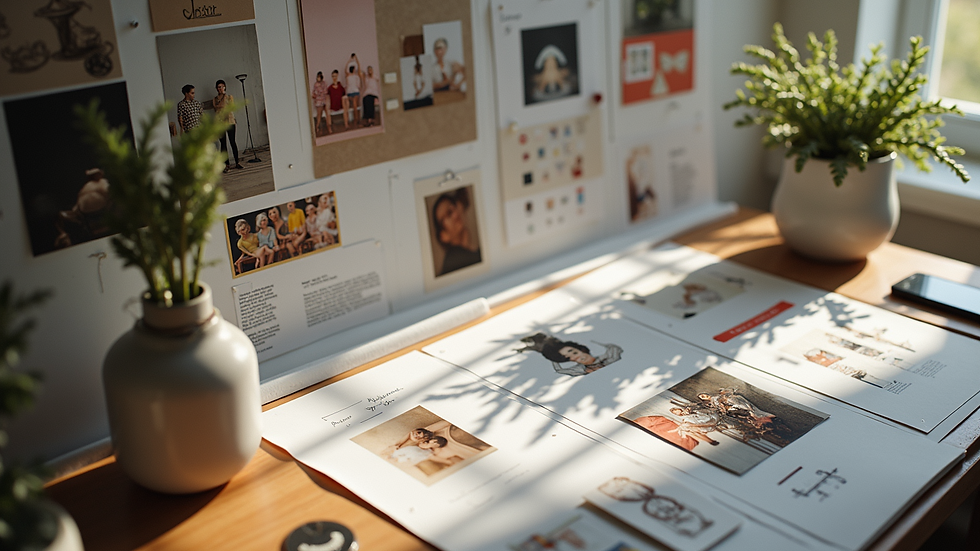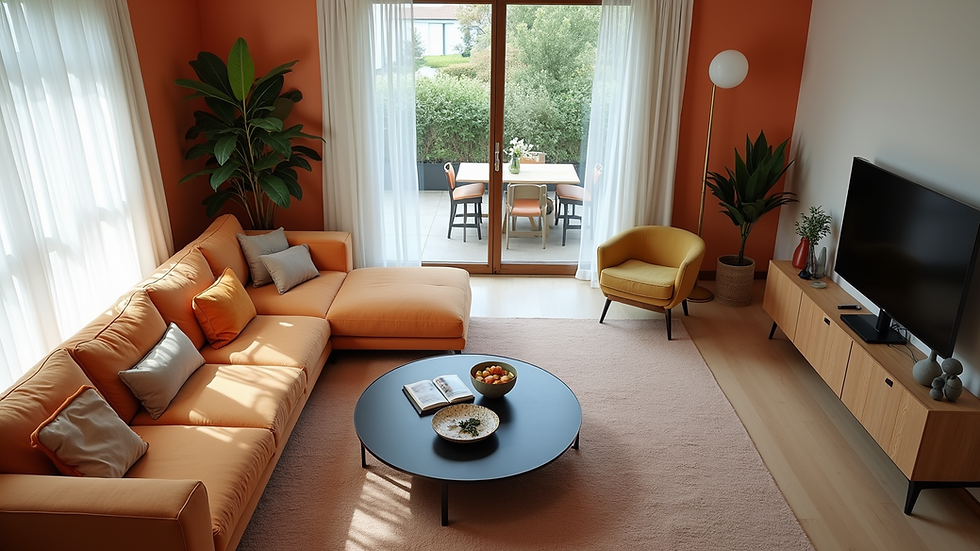Understanding How Interior Design Projects Unfold
- Gaurav Bhurke
- Jun 6
- 4 min read
The world of interior design is a blend of creativity, functionality, and meticulous planning. Whether you are renovating a single room or constructing an entire residence, understanding the phases of the interior design process can aid in achieving the desired outcomes. In this post, we will explore the key stages that define any interior design project and offer practical insights you can leverage to make your project successful.
The Interior Design Process
The interior design process begins with the client's vision. To ensure that the project aligns with the client’s expectations, a detailed understanding of their needs, preferences, and lifestyle is essential. This initial phase often involves comprehensive discussions about style, color schemes, furniture preferences, and overall budget.
A professional designer usually conducts a client interview to cover these aspects thoroughly. During this meeting, the designer might ask about the purpose of the space, the desired atmosphere, and any specific requests for functionality. For example, if a client wants a family-friendly living room, the designer will need to consider durable fabrics, safety features, and ample seating arrangements.

Concept Development
Once the initial discussions are complete, the designer moves on to the concept development phase. This is when ideas start to come to life through sketches, mood boards, and 3D renderings. At this stage, the designer visualizes different layouts and color schemes that align with the client's preferences.
Sketching ideas helps in exploring various arrangements. Mood boards are essential as they compile materials, colors, furniture, and textures that communicate the intended style. For instance, if a client desires a coastal theme, the mood board might include soft blues, sandy neutrals, and natural wood finishes.
Researching furniture options is another critical component of this phase. Designers should consider sourcing pieces that are not only aesthetically pleasing but also functional. The idea is to ensure that each item fits into the overarching vision of the space.

Design Development
After the concept has been approved, the design develops further in a structured manner. This phase includes definitive sketches, plans, and detailed selections for materials, finishes, and furniture. It’s a time to answer questions like, "What type of flooring would best suit the living room?” or “What wall finishes will complement the furniture?"
Collaboration with other professionals such as architects or contractors might be necessary. This ensures that all elements like lighting, plumbing, and electrical installations are factored into the design. A good interior designer will also create a detailed timeline and budget estimate, enabling clients to anticipate costs and deadlines related to various elements.
Another aspect of this phase is acquiring necessary permits or approvals, particularly for structural changes. Effective communication with contractors and suppliers plays a crucial role here, as delays could result in additional costs or project extension.

Implementation
Once every detail is finalized, we transition into the implementation phase. This is often the most exciting part of the interior design process, as it involves bringing the vision to life. During this phase, the designer coordinates all aspects of the project including the procurement of furniture, decor, and materials.
Contractors begin work, and the space transforms. Regular site visits are crucial to ensure that the work aligns with the original vision. It is also an excellent chance for the designer to make on-the-go adjustments if needed. The designer should maintain a checklist of what features are being installed and ensure quality control throughout the process.
The project will culminate in a final walk-through to inspect the completed work. Any discrepancies can be addressed at this time, ensuring that the client is satisfied and that final touches are applied.
Final Touches and Evaluation
With the implementation phase wrapping up, the final touches can now be made. This includes adding accessories such as artwork, plants, and decorative pieces that personalize the space. These little elements are instrumental in transforming a house into a home.
However, it's essential to take time for evaluation once the project concludes. This phase should involve feedback from the client regarding both the design and the overall experience. Questions to reflect on may include: “Did the design match your expectations?” and “What challenges did we face during the process?”
This step serves not just as a close for this project but as a valuable opportunity for learning that can be applied to future projects. Designers often take the insights gained from one project to enhance their future work processes.
A Successful Interior Design Experience
Navigating the world of interior design can be a rewarding yet complex task. With the proper understanding of how interior design projects unfold, you can approach your project with clarity and confidence. From the initial consultation to the last detail being added, every stage is integral to achieving your vision.
By carefully considering each phase and collaborating closely with your designer, you can create a space that not only looks good but also feels right. It’s all about striking a balance between aesthetics, functionality, and personal touch.
If you are interested in diving deeper into how a professional can guide you through your next design journey, consider exploring their detailed work process.
Ready to Design Your Dream Space?
Every interior design project begins with a vision but unfolds through a series of carefully structured processes. Understanding these phases can help you as a client to navigate your next interior design project with ease. Whether you're a homeowner or a business looking to revamp your space, insight into the interior design process will lead to a fulfilling experience.
By following this guide, you can prepare yourself for a successful collaboration with your chosen interior designer and watch your vision come to life. Embrace the opportunity to create an environment that resonates with your personal style and functionality needs. Happy designing!




Comments